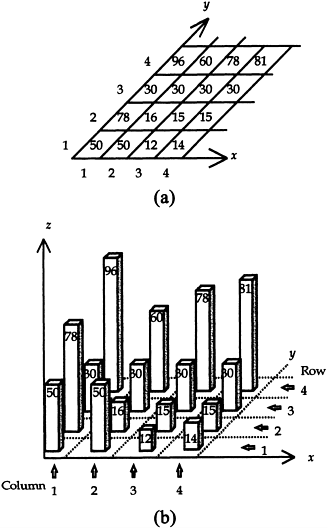105.
| [Cover] [Contents] [Index] |
Page 192
ln(3)/ln(2)=1.58. The fractal dimension D for Figure 5.1b is computed in a similar manner as ln(8)/ln(3)=1.89. The above formula is derived assuming a perfect self-similar nature. In practice, it is difficult to compute D using Equation (5.5) directly, so approximations to this relationship are employed.
First, the concept of image intensity surface is introduced. In general, an image is treated as a two-dimension matrix. At each intersection of column x and row y of the image matrix, we store the pixel value, denoted traditionally by the term DN. For instance, as shown in Figure 5.3a, the value of DN at the point x=2, y=2, is 16. If we interpret the DN axis as the

Figure 5.3 (a) An image is generally viewed as a two-dimensional matrix, (b) Pixel values are treated as the third (z) co-ordinate, which results in a three-dimensional intensity surface.
| [Cover] [Contents] [Index] |
EAN: 2147483647
Pages: 354